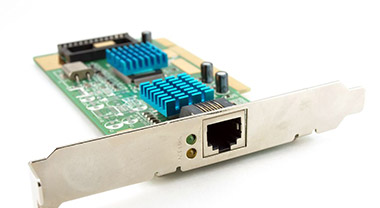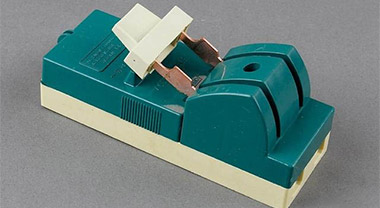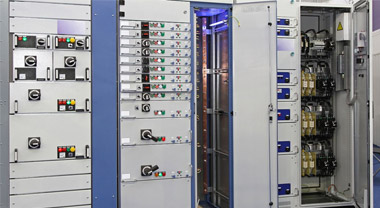The hidden protection function of the circuit breaker
Circuit breaker protection mainly includes: breaker failure protection, automatic reclosing, charging protection, dead zone protection, three-phase inconsistency protection and instantaneous follow-up. This article mainly discusses circuit breaker protection under 3/2 connection mode.
1. Configuration of circuit breaker protection device
Generally, in the double-bus and single-bus wiring mode, when the transmission line protection wants to send a trip command, only one circuit breaker at the local end of the line will be tripped. Naturally, the reclosing will only reclose this circuit breaker, so it is reasonable to configure the reclosing according to the protection configuration.
In the 3/2 wiring mode, failure protection, automatic reclosing, three-phase inconsistency protection, dead zone protection and charging protection are integrated into one device. This device is called circuit breaker protection.
2. Breaker failure protection
Breaker failure protection means that when the relay protection action of the faulty electrical equipment issues a trip command and the circuit breaker refuses to operate, the protection action information of the faulty equipment and the current information of the refusal circuit breaker are used to determine the failure of the circuit breaker. Short time limit cuts off other related circuit breakers in the same plant to minimize the scope of power outages, thereby ensuring the stable operation of the entire power grid, and avoiding serious burning of faulty components such as generators and transformers and the collapse of the power grid.
Generally, circuit breaker failure protection function is configured on 220kV and above circuit breakers, and some important 110kV circuit breakers will also be equipped with failure function. The following detailed analysis: Breaker failure protection in 3/2 wiring mode.
If a short circuit occurs on the 500kV I bus, the bus protection action will jump all the circuit breakers on the bus. If the 5021 circuit breaker fails, the failure protection of the 5021 circuit breaker should trip the 5022 circuit breaker and send a remote trip command to trip the circuit breaker on the opposite side of line 2. (If the connecting element is a transformer, trip the circuit breakers on each side of the transformer)
Therefore, after the failure protection action of the side circuit breaker, all the circuit breakers and the middle circuit breaker on the bus bar of the side circuit breaker should be tripped, and the remote trip function should be activated to trip the circuit breaker on the opposite side of the line connected to the side circuit breaker (or the tripping transformer is open on each side).
If a short circuit occurs on line 2, the line protection trips two circuit breakers 5011 and 5021. If the 5022 circuit breaker fails, the failure protection of the 5022 circuit breaker should trip the 5023 circuit breaker, and send a remote trip command to trip the circuit breakers on each side of the No. 2 main transformer, so that the short circuit point can extinguish the arc.
Therefore, after the failure protection action of the middle circuit breaker, the two side circuit breakers on both sides of it should be tripped, and the remote trip function should be activated to trip the circuit breaker on the opposite side of the line connected to the middle circuit breaker (or the circuit breakers on each side of the transformer).
If the above failure protection does not activate the remote tripping function, although the line's backup protection can cut off the circuit breaker on the opposite side, it will lengthen the fault removal time. And the failure protection of the middle circuit breaker basically has the function of remote tripping initiated by failure action.
The failure action process of the circuit breaker under the double bus connection mode will not be repeated, and it is simpler than the 3/2 connection mode.
3. About automatic reclosing
3.1. Requirements for the sequence of automatic reclosing
If a short circuit occurs in line 2, the protection action of line 2 trips the 5021 and 5022 circuit breakers, and the reclosure will naturally close the two circuit breakers. Considering that it is possible to overlap on the permanent fault line, in order to reduce the impact, the two circuit breakers should not overlap at the same time. So there is a question of which order to overlap first.
Should the circuit breaker be closed first or the intermediate circuit breaker?
If the intermediate circuit breaker 5022 is closed first, and it is reclosed on a permanent fault, the line protection will trip the 5022 circuit breaker again. In case the 5022 circuit breaker fails at this time, the failure protection of the 5022 intermediate circuit breaker will trip the 5023 circuit breaker, and simultaneously trip the circuit breakers on each side of the No. 2 main transformer (if the line is the circuit breaker on the opposite side), this will It affects the work of the No. 2 main transformer (or line) of the connecting element, so the intermediate circuit breaker cannot be reclosed first.
If the circuit breaker 5021 is closed first, and it is also on a permanent fault, the line protection will trip the circuit breaker 5021 again. In case the 5021 circuit breaker fails at this time, the 5021 circuit breaker failure protection trips all side circuit breakers on the Ⅰ bus, and sends a long trip to trip the circuit breaker on the opposite side of line 2. The connection element or other elements of line 2 will not be affected. .
Therefore, when the line protection trips two circuit breakers, the side circuit breaker should be closed first, and after the equilateral circuit breaker is successfully reclosed, the circuit breaker should be closed again. At this time, the intermediate circuit breaker must be closed on the intact circuit. If the side circuit breaker is unsuccessful in reclosing and close to the fault line, the protection will trip the side circuit breaker again, and the middle circuit breaker will no longer reclose at this time.
3.2. The start and method setting of reclosing
There are two ways to start reclosing: position-incompatible start and external trip start. External trip start means that the line protection action sends a trip command and starts reclosing at the same time.
The position does not correspond to the start is divided into: single-phase stealth jump start and three-phase stealth jump start.
Protection trip start is divided into: single-phase trip start and three-phase trip start.
Regarding the setting method of reclosing, you can choose one of the four methods: single-phase reclosing, three-phase reclosing, comprehensive reclosing and reclosing deactivation. Either the switch on the screen or the control word in the setting list can be used to select the reclosing mode.
3.3. Reclose inspection method
Reclosing inspection method: The following three methods can be used when three-phase reclosure is required for line tripping.
Synchronization inspection method: line and synchronization voltage are greater than 40V, and then the phase difference between the line voltage and the phase voltage of the same name in the synchronization voltage is within the fixed value setting range.
No-voltage detection method: Check that the line or the voltage of the same period is less than 30V, and the corresponding TV is not disconnected.
No verification method: No inspection is performed, and the closing command is issued when the time is up.
3.4. About closing first and closing after reclosing
Close the circuit breaker first to close the fault, then close the circuit breaker no longer. In the 3/2 wiring mode, there is a problem of closing first and closing after the reclosing of side circuit breakers and middle circuit breakers. We have already mentioned it when we talked about the failure problem. A brief description is given below:
Reclosing first can send out a closing pulse after a short delay. When the first closing and reclosing starts, the output digital contact is used as the "blocking first closing" digital input of the latter closing and reclosing.
When the post-closing recloser receives the information that the "Latching first close" input contact is closed, its reclosing will send a closing pulse after a longer delay. The post-closing reclosing will only send the closing pulse with a longer delay only when there is an input of the "Latching first closing" binary input.
Reclose first:
"Investment first"-soft pressing plate, hard pressing plate
Short time delay (reclosing setting time, about 0.7s)
Reclose after closing:
"Lock first close" open entry
"Post-closing fixed" control word
Long time delay (reclosing setting time after reclosing time delay, about 1.4s)
4. Charging protection
When the circuit breaker where the device is located is used to charge the busbar and other components and close to the faulty component, there is charging protection as the protection in this case. The charging protection is composed of two-stage two-time limit phase over-current and one-stage zero-sequence over-current. The current is taken from the TA of the circuit breaker.
When the charging protection is switched on, the phase current element of the corresponding section will trip after the corresponding setting delay and the outlet of the charging protection will trip the circuit breaker. After the charging protection is activated, the failure protection is started, and then other circuit breakers are tripped through the failure protection delay outlet.
In addition, failure protection, dead zone protection, inconsistency protection, and charging protection actions all block and reclose. The charging protection is only activated when the line (transformer) is charging, and it will exit immediately after the charging is normal.
5. Dead zone protection
The cause of the dead zone: When a short circuit occurs between the circuit breaker and the current transformer, in many cases the fault cannot be removed after the protection is activated.
A simple description of the dead zone: the following K1 faults are in the I bus protection zone, but after the I bus protection action trips all I bus circuit breakers including 1DL, the fault point is still in the system. This type of fault is a dead zone fault .
Significance of dead-zone configuration: Considering such dead-zone faults in the station, the current is generally larger and the impact on the system is also greater. Although reliable failure to remove, the failure protection action generally requires a long delay, so special Set up a dead zone protection faster than the failure protection action.
Dead-zone protection input: on the basis of failure protection input, the dead-zone protection control word is also put into the dead-zone protection function to take effect.
Dead zone protection action: three-phase trip signal (for example: three-phase tripping for transmission and transformation, three-line tripping, or three separate-phase trips of A, B, and C act simultaneously) + three-phase trip (TWJ signal) + dead zone current action , The dead zone protection is activated after the dead zone delay.
Dead zone protection outlet: the same as the breaker failure protection outlet, that is, which breakers are tripped by the failure outlet of the side circuit breaker, and which circuit breakers are tripped at the dead zone exit of the side circuit breaker.
This is the reason why the dead zone protection is attached to the failure protection pressure plate. The dead zone protection can also be understood as an alternative (different criteria and different delays) failure protection.
6. Three-phase inconsistent protection
The origin of the three-phase inconsistency: For the split-phase circuit breaker, due to equipment quality and operation, there may be inconsistent actions of the three-phase circuit breaker during operation, which will eventually cause only one or two phases to trip and be in a non-full-phase abnormal state.
The harm of three-phase inconsistency: When the system is in a non-full-phase operation state, the negative sequence, zero sequence and other components in the system will cause certain harm to the electrical equipment, and also affect the correct operation of the system protection device, so the power system is not allowed to be long Incomplete phase operation over time.
When the line reclosing is unsuccessful, when the system enters the non-full-phase operation, there will be no other protection to eliminate this fault. Therefore, the non-full-phase protection (three-phase inconsistent protection) is installed in the circuit breaker of the split-phase operation. When the phase reaches a certain time, the other phases are skipped.
The realization of three-phase inconsistency: The protection function to eliminate the abnormal state of the three-phase inconsistency. In high-voltage or ultra-high-voltage systems, it is generally implemented in the circuit breaker body, but it is also implemented in the circuit breaker protection (or line protection in).
Inconsistent protection in the circuit breaker body, the 18 countermeasures required by the State Grid: circuit breakers with voltage levels of 220kV and above should be equipped with three-phase position inconsistency protection on the circuit breaker body.
Even after the single-phase tripping of the circuit breaker, if the reclosing action, due to pressure, mechanical, secondary circuit and other reasons, the circuit breaker did not reclose successfully, the three-phase must be tripped within 2-2.5s and no longer reclosed. Ensure the safety of the system.
When there is no three-phase inconsistency protection in the circuit breaker, an independent three-phase inconsistency protection device can be installed. The independent three-phase inconsistency protection uses circuit breaker auxiliary contacts or position contacts to form a starting circuit for judging three-phase inconsistencies, and can also use zero sequence current and negative sequence current to block the circuit to improve the reliability of the circuit.
Input of three-phase inconsistency protection: When the three-phase inconsistency protection soft plate and hard plate are both input (control word), the three-phase inconsistency protection function will work.
Three-phase inconsistent start: three-phase jump position input is inconsistent + jump position phase no flow.
The action of the three-phase inconsistency protection: the inconsistency is activated by the zero sequence opening control word, the inconsistent start is activated by the inconsistent zero sequence current criterion, and then the three-phase circuit breaker is tripped through the inconsistent delay outlet. The inconsistency is activated by the negative sequence opening control word, the inconsistent start is activated by the inconsistent negative sequence current criterion, and then the three-phase circuit breaker is tripped by the inconsistent delay outlet. When the above two control words are both exited, the three-phase circuit breaker will be tripped by the inconsistent delay outlet after the inconsistent three-phase start.
The three-phase inconsistency protection action does not fail to start, and at the same time the recloser is blocked.
Locking of three-phase inconsistent protection: The circuit breaker is in a three-phase inconsistent state for 12 seconds, a position inconsistency alarm is issued, and the three-phase inconsistency protection is blocked.
The setting principle of the time relay of the three-phase inconsistent protection: the delay setting of the three-phase inconsistency protection of the relay protection device should be able to avoid the action time of the reclosing.
7. Instant follow jump
This loop is up to the user to decide whether to invest. Instantaneous follow-up is divided into: single-phase follow-up, two-phase trip combined three-phase and three-phase follow-up. The circuit breaker will be tripped again after these three circuits exit, and the above three circuits can only issue a trip command when the starting element is activated.
Single-phase follow-up: ™ Receives Ta, Tb, Tc single-phase trip signals from the line protection, and the corresponding phase's high-constant current components act, and instantaneous phase tripping.
Two-phase trip and three-phase trip: the two-phase trip signal from the line protection is received and only the two-phase trip signal is received, and the high constant current element of any phase is activated, and the three-phase trip is combined after a 15ms delay.
Three-phase follow-up: After receiving a three-phase trip signal, and the high constant current element of any phase acts, the instantaneous three-phase trip exits.
8. AC voltage disconnection judgment
The criterion for the judgment of AC voltage disconnection is: the protection does not start, and the three-phase voltage vector sum is greater than 12V, and the TV short-line abnormal signal is sent after a delay of 1.25s. When the TV is disconnected, the low-power factor component will be withdrawn, and the synchronization and non-pressure detection functions will be exited. Other functions are normal. When the three-phase line voltage returns to normal 10s, it will automatically resume normal operation.
9. Abnormal trip position alarm
When the TWJ is active and the phase circuit has current, or the three-phase TWJ position is inconsistent, the TWJ abnormality will be reported after a 10S delay.




